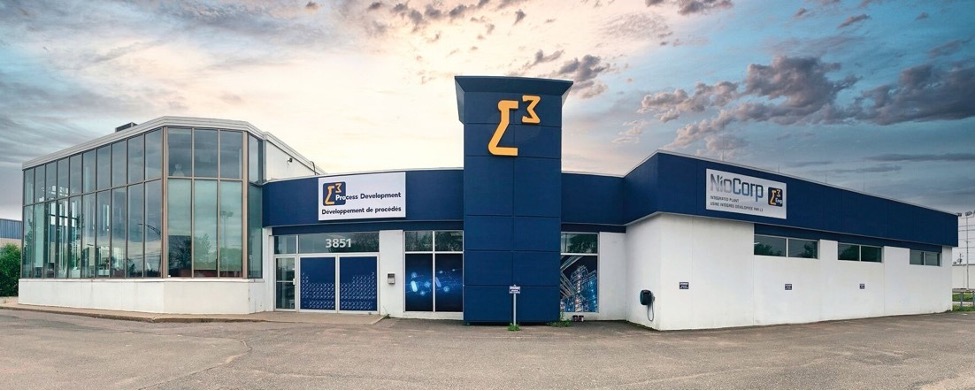Metallurgical tests now being conducted show promise in streamlining the expected production of niobium, scandium, titanium, and rare earths and in reducing expected greenhouse gas emissions by the Elk Creek Project’s planned facility in Nebraska
CENTENNIAL, Colo. (June 6, 2022) – Metallurgical testing being conducted now by NioCorp Developments Ltd. (“NioCorp” or the “Company“) (TSX: NB; OTCQX: NIOBF) in Quebec, Canada, is intended to quantify the Company’s ability to extract rare earth elements (“REEs”) from Elk Creek ore. It is also aimed at testing a carbonation process that can be used to recycle key reagents used in the removal of calcium and magnesium carbonates from the Elk Creek ore ahead of operations that are expected to extract and recover niobium, scandium, titanium, and rare earths once project financing is secured.
If proven successful at the demonstration plant scale, these process improvements have the potential to reduce projected Project operating costs (“OPEX”) and capital expenditures (“CAPEX”) as compared to estimates in the Project’s May 2022 feasibility study (reported here), as well as to lower the Project’s anticipated production of greenhouse gas (“GHG”) emissions as compared to projections in the May 2022 feasibility study. These process improvements also could allow the Company to produce calcium and magnesium materials at purity levels that may be sold as commercial products; however, further analysis and testing is required to determine whether there are reasonable prospects for economic extraction for calcium and magnesium before they could be included in the Elk Creek Mineral Resource.
NioCorp’s metallurgical consultants at L3 Process Innovation (“L3”) are continuing to perform bench and pilot-scale testing of these process improvements at a dedicated facility in Quebec. The testing will advance from the bench and pilot scale to the demonstration plant scale once the remaining equipment for the demonstration plant arrives and the demonstration plant assembly can be completed and testing begun. Launch of demonstration plant testing is expected to occur in the coming weeks.
Process Improvements Explained
The Elk Creek Project’s existing process flowsheet envisions using hydrochloric acid to remove calcium and magnesium carbonates, and other impurities from mined ore, requiring a significant amount of capital and operating expense to recover and recycle the hydrochloric acid.
Given NioCorp’s emphasis on recycling and recovery operations throughout the Elk Creek Project’s design, L3’s optimized design for the flow sheet utilizes thermal treatment, ammonium chloride, and carbonation to break down the carbonate minerals in the mined ore and remove virtually all of the calcium and magnesium from the ore. Removing these materials early in the process allows for the rest of NioCorp’s processing plant to be smaller and operate more efficiently.
 L3 Process Innovation’s facility in Quebec where NioCorp’s bench, pilot, and demonstration plant work is being conducted. L3 Process Innovation’s facility in Quebec where NioCorp’s bench, pilot, and demonstration plant work is being conducted. |
If proven at the demonstration plant level, this design is expected to substantially reduce the amount of acid consumed by the operation, which could lead to lower CAPEX and OPEX costs for the Project than those projected in the Project’s May 2022 Feasibility Study.
Possible Reductions in Greenhouse Gas Emissions
The improved design also regenerates the ammonium chloride consumed during the carbonation stage. Carbonation consumes carbon dioxide and reduces the GHG footprint of the prospective operation.
The optimized design and carbonation process all utilize proven technologies and are not expected to introduce additional technology risk to the Project if they are implemented in the Project’s final design.
Recently, L3 was able to demonstrate that this carbonation step can produce a calcium and magnesium product that is 96%-97% pure. NioCorp intends to further evaluate the use of this product for underground mine backfill as well as to investigate its potential as a saleable byproduct. The L3 demonstration plant, when constructed and operational, is expected to produce tens of kilograms of this material that can be used for evaluation purposes.
|
In this new video, NioCorp Chief Operating Officer Scott Honan explains how the Elk Creek Project may lead to a net reduction in greenhouse gases because of how its products can be used in low-GHG-emitting technologies. |
“I have been very pleased with the progress that the L3 team has been making toward proving the technical feasibility of this innovative approach to the Elk Creek Project’s flowsheet,” said Scott Honan, NioCorp’s Chief Operating Officer. “This work illustrates how strongly NioCorp is committed to reducing our net greenhouse gas emissions when and where we can. Niobium, scandium, titanium, and the rare earths all play critical roles in reducing greenhouse gas emissions in the products in which they are used. We would also like to produce these critical minerals with as low a GHG profile as possible.”
Qualified Persons
- Eric Larochelle, B.Eng., Co-Owner, L3 Process Development, a Qualified Person as defined by National Instrument 43-101, has reviewed and approved the technical information related to hydrometallurgy contained in this news release.
- Scott Honan, M.Sc., SME-RM, COO of NioCorp Developments Ltd., a Qualified Person as defined by National Instrument 43-101, has reviewed and approved the additional technical information contained in the news release.
# # #
@NioCorp $NB.TO $NIOBF #Niobium #Scandium #ElkCreek #rareearth #neodymium #terbium #dysprosium
For More Information
Contact Jim Sims, VP of External Affairs, NioCorp Developments Ltd., +1 (303) 503-6203, [email protected]
About NioCorp
NioCorp is developing a superalloy materials project in Southeast Nebraska that will produce Niobium, Scandium, and Titanium. The Company also is evaluating the potential to produce several rare earth byproducts from the Project. Niobium is used to produce superalloys as well as High Strength, Low Alloy (“HSLA”) steel, which is a lighter, stronger steel used in automotive, structural, and pipeline applications. Scandium is a superalloy material that can be combined with Aluminum to make alloys with increased strength and improved corrosion resistance. Scandium is also a critical component of advanced solid oxide fuel cells. Titanium is used in various superalloys and is a key component of pigments used in paper, paint and plastics and is also used for aerospace applications, armor, and medical implants. Magnetic rare earths, such as Neodymium, Praseodymium, Terbium, and Dysprosium are critical to the making of Neodymium-Iron-Boron (“NdFeB”) magnets, which are used across a wide variety of defense and civilian applications.
Cautionary Note Regarding Forward-Looking Statements
Certain statements contained in this document may constitute forward-looking statements, including but not limited to statements regarding the Company’s expectations that, once financed and engaged in commercial production, the Project will have reduced operating costs and capital expenditures compared to estimates in the Project’s May 2020 feasibility study, including reductions in GHGs; the expectation that the optimized design and carbonization process will not introduce additional technological risk to the Project; the Company’s intention to evaluate the use of calcium and magnesium for underground mine backfill as well as to investigate its potential as a saleable byproduct; and the expected production of the L3 demonstration plant. Such forward-looking statements are based on estimates and assumptions made by the Company in light of its experience and its perception of historical trends, current conditions and expected future developments, as well as other factors that the Company believes are appropriate in the circumstances. Readers are cautioned that such forward-looking statements involve known and unknown risks, uncertainties and other factors that may cause a change in such forward-looking statements and the actual outcomes and estimates to be materially different from those estimated or anticipated future results, achievements or position expressed or implied by those forward-looking statements. Risks, uncertainties and other factors that could cause NioCorp’s plans or prospects to change include risks related to NioCorp’s ability to operate as a going concern; risks related to NioCorp’s requirement of significant additional capital; changes in demand for and price of commodities (such as fuel and electricity) and currencies; changes or disruptions in the securities markets; legislative, political or economic developments; the need to obtain permits and comply with laws and regulations and other regulatory requirements; the possibility that actual results of work may differ from projections/expectations or may not realize the perceived potential of NioCorp’s projects; risks of accidents, equipment breakdowns and labor disputes or other unanticipated difficulties or interruptions; the possibility of cost overruns or unanticipated expenses in development programs; operating or technical difficulties in connection with exploration, mining or development activities; the speculative nature of mineral exploration and development, including the risks of diminishing quantities of grades of reserves and resources; the risks involved in the exploration, development and mining business, and the risks set forth in the Company’s filings with Canadian securities regulators at www.sedar.com and the SEC at www.sec.gov. NioCorp disclaims any intention or obligation to update or revise any forward-looking statements whether as a result of new information, future events or otherwise.
